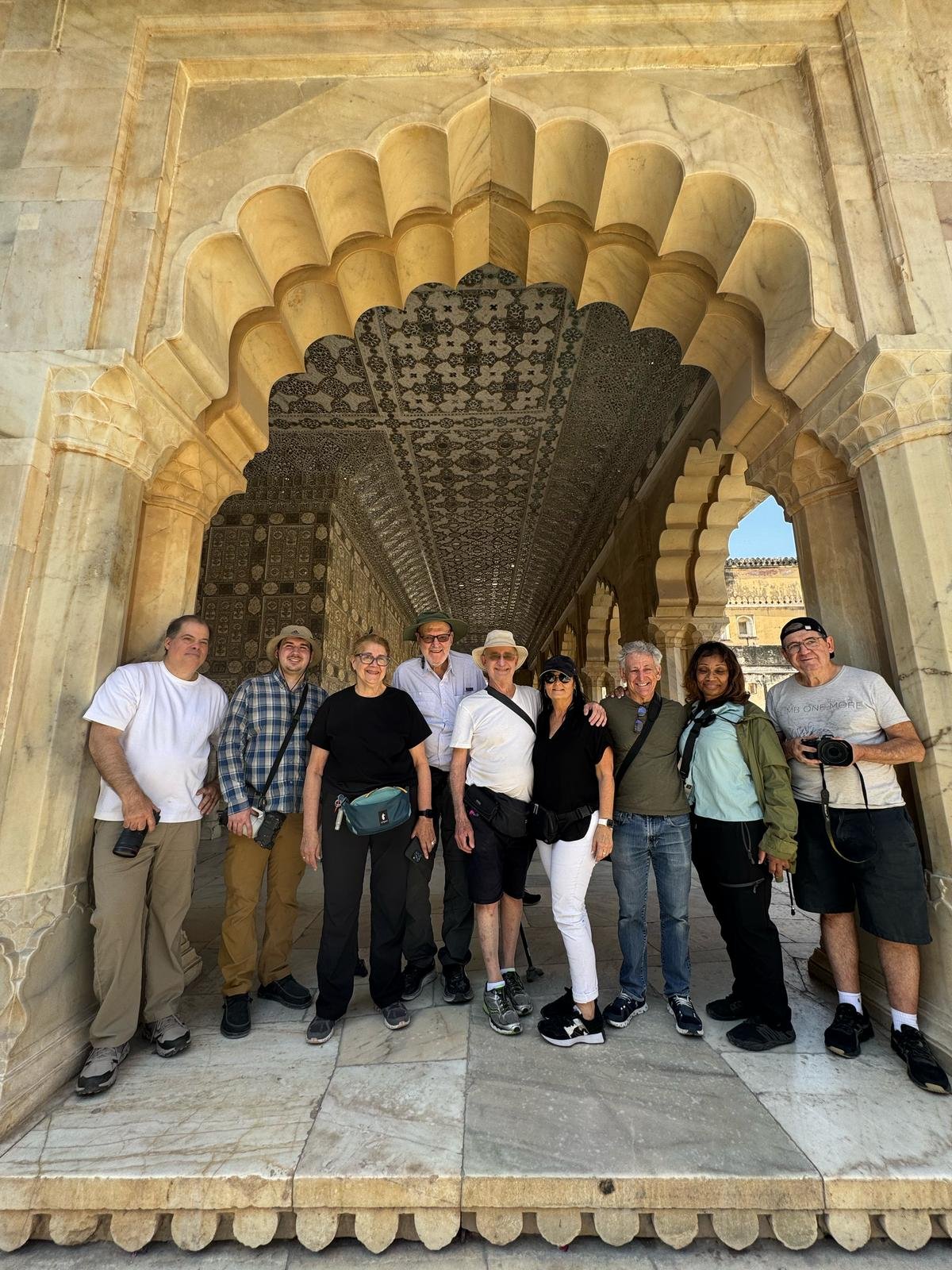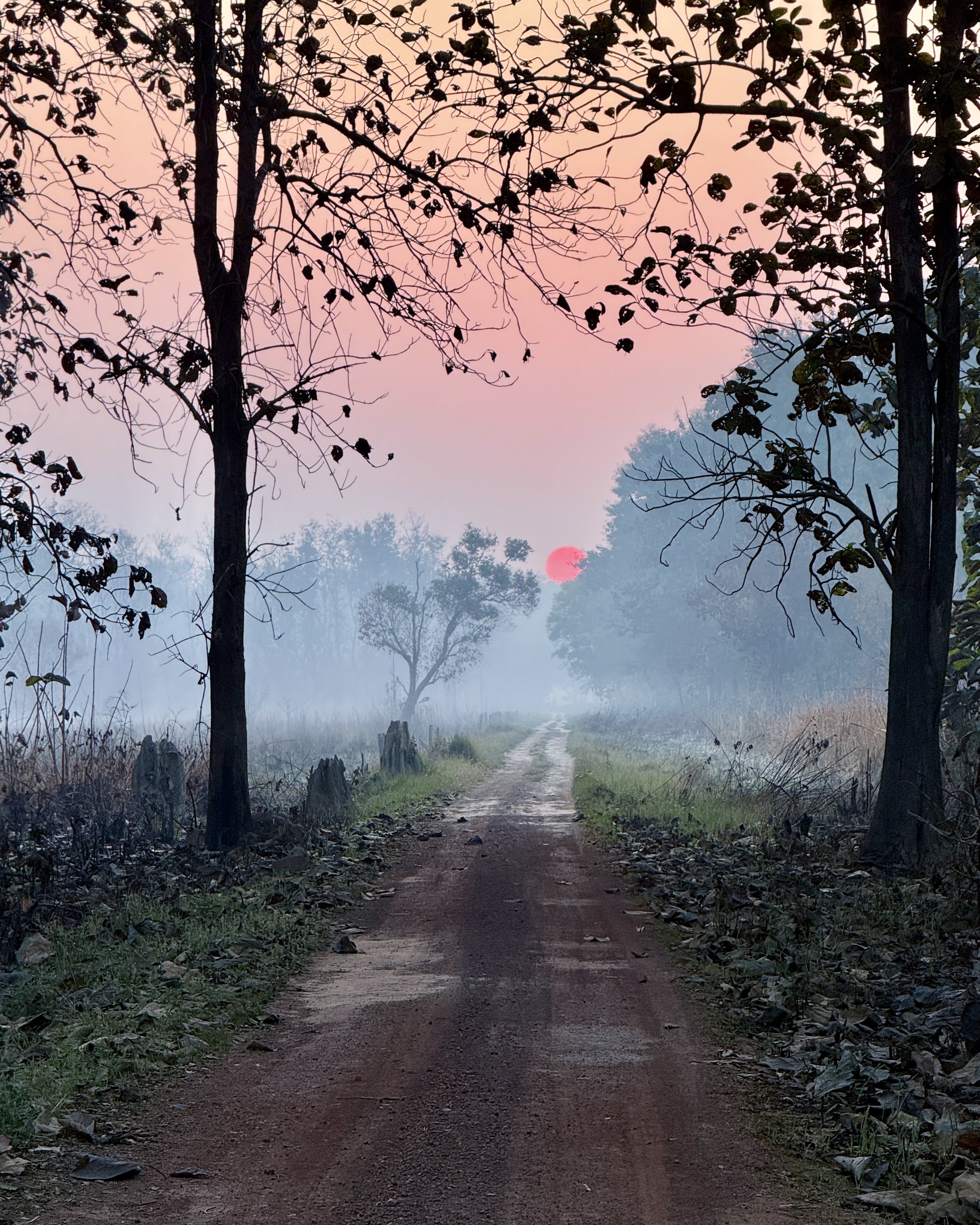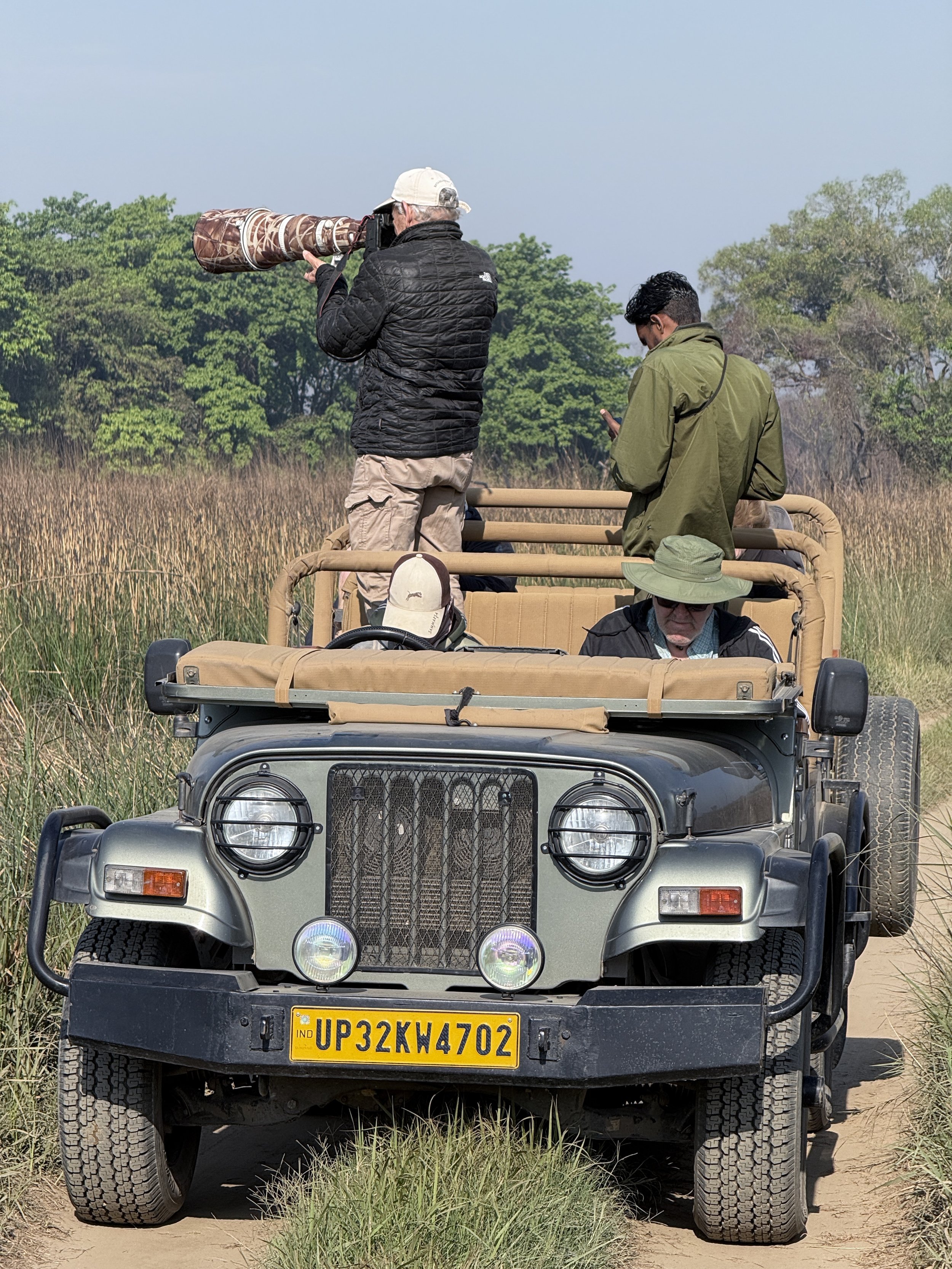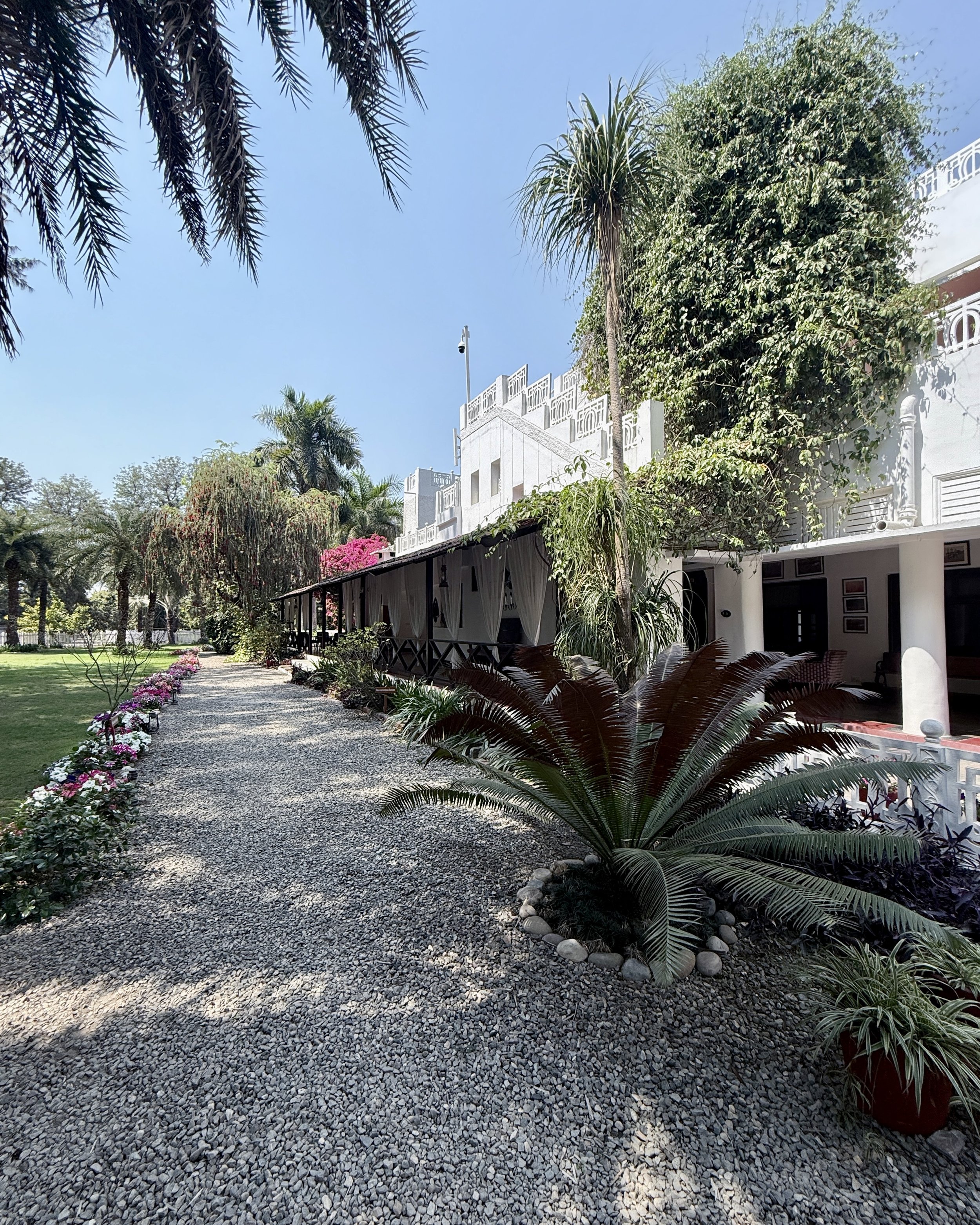My Photography & Travel Guide to Dudhwa National Park, India
Where Wild India Still Roams Free
A group of us, all part of a Colby Brown photography workshop, set off from New Delhi on an 8-hour drive to Dudhwa National Park. I felt incredibly lucky to be part of such an amazing group for the next 10 days of adventure, laughter, and unforgettable memories.
Photo Credit Haley Blogg in Jaipur (Pictured: Vito, Ethan, Mel, Len, Mark, Haley, Mark, Fatrice & Maximo)
Tucked away near the Nepal border, Dudhwa would be the starting point of our tiger safari adventure. Over the next few days, we embarked on six game drives through its wild and lesser-known terrain—an ideal warm-up before heading south to the more famous Ranthambore National Park.
What makes Dudhwa stand out, especially for photographers, is its raw, untouched beauty. Unlike the busier parks in India, Dudhwa feels like a hidden sanctuary—quiet, mysterious, and alive with possibility. The tall elephant grass creates a cinematic backdrop, while soft morning mist and golden light filter through the forests. The scene feels like you are in a nature documentary. It's a place where you learn to be patient, to listen, and to anticipate that one perfect moment.
Photo Credit Ethan Johnson (@Ethan.wanders)
Dawn in Dudhwa National Park is the kind of moment you chase for years. As a wildlife photographer, you live for this—standing quietly in the pre-dawn chill, camera in hand, breath visible in the mist. The world feels hushed, suspended. And then it begins: the distant, echoing call of a sarus crane, the faint rustle of elephant grass, and the slow stirring of life in the shadows.
Dawn in Dundwa
Nestled along the Indo-Nepal border in Uttar Pradesh, Dudhwa is wild in the truest sense of the word. There are no traffic jams of jeeps, no crowds of tourists with iPhones. It’s just you, your guide, and the jungle. It’s a place where patience isn’t just helpful—it’s essential. And if you’re willing to wait, it will reward you with moments that feel like they belong to another world.
Amazing Photographers Tony Goldman and Len Cohen
There’s also the rare magic of the one-horned rhinoceros, reintroduced to this park decades ago, now quietly reclaiming their space. And for those with a long lens and a love for wings? Dudhwa is heaven. Over 450 bird species fill the air with movement and song—hornbills, kingfishers, raptors, and the elegant sarus, often wading through a mirror-still pond at sunrise.
Whether you're chasing the golden light that filters through sal trees or hoping to capture a tiger mid-stride, this Photography Guide to Dudhwa National Park is packed with travel tips, must-visit photo spots, and gear suggestions to help you get the most out of your trip.
Where to Stay in Dudhwa National Park
When deciding where to stay in Dudhwa National Park, your best bet is to base yourself near the main entrance in Dudhwa or close to the Kishanpur and Katarniaghat sanctuaries for broader coverage. Accommodations here range from luxurious jungle lodges to charming, eco-conscious stays.
Jaagir Lodge
Luxury Hotels in Dudhwa National Park
Jaagir Lodge by Tree of Life – A heritage hunting lodge turned luxury retreat, with boutique rooms and guided safaris. This is a fantastic hotel.
The Corbett Jungle Lore – Offers packages that include Dudhwa excursions with expert naturalists.
Dudhwa Wilderness Camp – Rustic luxury with a focus on conservation and immersive wildlife experiences.
Shot on a morning walk by the hotel
Mid-Range Options
Dudhwa Tiger Reserve Forest Rest Houses – Basic yet well-located government-run options inside the park.
Wild Tusker Lodge – A cozy, budget-friendly lodge popular with wildlife photographers.
Eco-Hut Homestay – Offers an authentic stay with local hosts and home-cooked meals.
A Bee-Eater
How Many Days Should You Stay in Dudhwa?
For an immersive photography and wildlife experience, plan to stay 3 to 5 days. This gives you ample time to explore different zones (Dudhwa, Kishanpur, Katarniaghat), go on multiple safaris during golden hours, and increase your chances of wildlife sightings.
By our hotel on a morning walk
Best Time to Visit Dudhwa National Park
The park is open from November to mid-June, with peak wildlife viewing and best photography conditions from December to March. The winter months bring cooler weather, misty mornings, and soft, golden light—perfect for dramatic landscape and animal shots.
A Fish Owl
Avoid the monsoon season (July–October) as the park is closed, and roads become impassable.
Best time to visit Dudhwa for photography: December through February
Notable event: Holi (March) is celebrated vibrantly in nearby villages—great for cultural photography.
How to Get Around Dudhwa
Once you’re in the park, your main mode of transport will be authorized safari jeeps with trained guides and naturalists.
Landscapes in the Park
For long-distance travelers:
Closest railway station: Dudhwa or Palia Kalan.
Nearest airport: Lucknow (230 km) or Bareilly (250 km).
Rideshare apps: Not available—arrange transport with your lodge.
Rhesus monkeys
Safari Vehicles in Dudhwa: All About the Gypsy
When you’re heading into the wild heart of Dudhwa National Park, your ride will most likely be a Maruti Suzuki Gypsy—India’s go-to safari vehicle for navigating rugged forest tracks and narrow trails.
What is a Gypsy?
The Gypsy is a compact 4x4 open-top jeep used across most Indian national parks. It's favored for its off-road capability, open design (perfect for shooting from all angles), and ability to handle everything from muddy trails to forest terrain with ease.
Photo Credit: Haley Blogg
What to Expect on Safari:
Seating: Typically accommodates 6 passengers, including a driver and park guide. Photographers can often book a full vehicle for more shooting flexibility.
Open Top: Offers an unobstructed 360-degree view—great for wide-angle shots, spotting birds overhead, and tracking wildlife movement.
Custom Rigs: Some lodges or private operators offer Gypsies with customized camera mounts or beanbag setups for added stability.
Pro Photography Tips for Shooting from a Gypsy:
📸 Bring a beanbag or clamp mount—tripods are tough to manage in a moving vehicle.
🔭 Sit on the back bench if you prefer a bit more elevation and side-angle flexibility.
🧢 Don’t forget a hat, sunglasses, and a dust cover for your gear during dry months.
💨 Wear layers—it can be chilly at 6 AM and scorching by 10.
Where to Eat & Grab Coffee
Jaagir Lodge Restaurant - we had all our meals in our hotel
Photography Gear to Bring
Dudhwa’s dense forests, tall grasslands, and soft morning light make it a dream for wildlife photographers. Here’s what you need:
Camera Bodies
A few recommendations for Camera bodies:
Canon: EOS R5M2 or R1
Sony: Alpha A1/2 or A7R V
Nikon: Z6, Z9 or Z8
Our First Sighting
Lenses
My lens recommendations:
Telephoto: 100-400 mm, 300mm f/2.8, 400mm f/2.8, 100-500mm, or 200-600mm
Zoom: 24-70mm for habitat and jeep shots
Wide-Angle: 16-35mm for landscapes, forest canopy, and storytelling images
Pro Lenses for Tiger Photography
Sony FE 300mm f/2.8 GM OSS
Canon RF 400mm f/2.8L IS USM
Nikon Z 400mm f/2.8 TC VR S
Sony FE 600mm f/4 GM OSS
Canon RF 600mm f/4L IS USM




Accessories
My recommendations:
Tripod or beanbag (for jeep setups)
ND filters & circular polarizers are not needed
High-capacity memory cards & extra batteries
Binoculars – A must for early spotting
Drone: Not allowed within park zones
Lens Tips for Tiger Photography
Focal Length: A minimum of 300mm is ideal. 400mm–600mm gives you more flexibility, especially for tighter shots without disturbing the animal.
Aperture: f/2.8 or f/4 allows you to shoot in early morning or low light while creating beautiful background separation.
Flexibility: Consider a second body with a 70-200mm or 100-500mm lens for environmental portraits or close encounters.
Teleconverters: Don’t hesitate to pack one—both Canon and Sony’s extenders pair excellently with their flagship glass.
Dust Protection Tips for You & Your Camera Gear
Protecting Your Gear from the Dust Recommendations:
Use rain/dust covers or zip locks
Avoid changing lenses in the field
Wipe gear daily with a microfiber cloth
Protecting Yourself from the Dust
Wear a buff or cotton scarf over your nose and mouth
Use wrap-around sunglasses
Carry a saline nasal spray
Stay hydrated with a reusable bottle
Top Photography Spots in Dudhwa
Sathiana Range – Tigers, rhinos, swamp deer
Banke Tal Wetlands – Migratory and resident birds
Sal Forests – Dramatic light at sunrise
Kishanpur Sanctuary – Leopards and deer
Katarniaghat Sanctuary – Elephants, gharials, river dolphins
Photo Tip: Best light is between 6–9 AM and 4–6 PM.
Final Thoughts & Call to Action
Dudhwa may not have the name recognition of other Indian parks, but it offers an unrivaled blend of seclusion, biodiversity, and photographic opportunity.
If this Photography Guide to Dudhwa National Park inspired you, don’t forget to:
Subscribe to my newsletter below for more travel photography tips
Explore my other Photography and Travel Guides here
Happy shooting—and may your next frame be the one that tells a thousand wild stories.

















